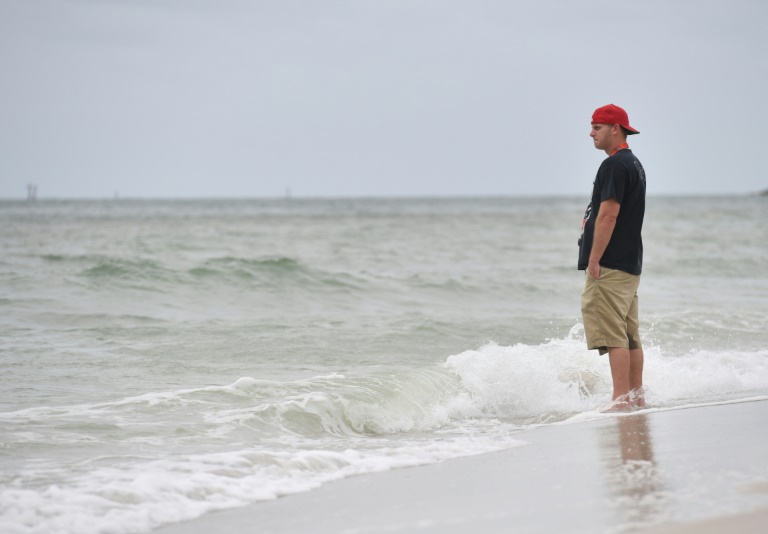Even more than the fierce winds whipping tall palm trees and threatening to rip roofs from houses, the beach resort of Naples in southwestern Florida was bracing Sunday for what could be a deadly rise in sea levels.
Authorities say powerful Hurricane Irma could send waters surging 10 to 15 feet (three to 4.5 meters) above normal levels along the shoreline, putting low-lying Naples — one of the richest communities in the US — at grave risk.
The scene from a storm-battered beach in Naples just hours before Irma’s full-force arrival was hardly comforting. The city’s natural defenses seemed almost laughable: pitifully small sand dunes planted with scrawny vegetation.
Just beyond the dunes sit big, fashionable homes with impeccably trimmed yards, all of them theoretically empty now following a mandatory evacuation order.
But areas where evacuation was merely recommended, and not required, are not far away — and they appeared particularly vulnerable to Irma’s wrath.
– Too late to leave –
The time for evacuation, in any case, was long past. Streets were strewn with palm fronds ripped from the trees. Interstate highway 75 was being swept by wind gusts powerful enough to knock a man off his feet, and visibility was extremely poor.
There were no visible signs of life at the area’s big hotels, or its seaside residences or villas. Businesses had boarded over their windows. Everything was closed. The only visible light came from the forlorn blinking of traffic lights on abandoned streets.
Evacuees still in the area were hunkered down in shelters, or in hotels farther away from the coast. Everyone fears that Irma’s intense winds might drive high, pounding seas up onto land, where they could wreak destructive havoc with cars, houses — really everything.
“I am concerned about people that don’t believe in the storm surge,” said Virginia Defreeuw, 76, who fled from her mobile home to a shelter. “You need to be afraid of the storm surge! People are not listening.”
“Some of them think, ‘Oh, it’s not gonna happen to me,'” she said, adding that some locals believed that having survived earlier storms they could ride out this one.
“They think they can do one more,” she said, “but this is a serious one.”
More than a million people live in the larger Naples area. Like other vulnerable coastal areas, its population has soared in recent years — growing by nearly 30 percent just since 2010.
– Coastal area evacuated –

The white-sand beaches of Naples, Florida stood near-deserted as Hurricane Irma closed in
Many of the houses along the seafront are new — often owned by retirees drawn by Florida’s white-sand beaches and nearly perpetual sunshine.
Mark Thorpe, a retiree evacuated from Key West, vividly recalled the effects of Hurricane Wilma when it struck in 2005.
“It’s no fun,” said Thorpe, who is 69. “The water kept coming up, stair by stair. We had a buddy who had a (Ford) Bronco parked right outside the house — he had water in his ashtrays.
“We had a big motorhome. The insurance company came by weeks later. They didn’t even go on board, they just looked to the water line around the motorhome” and declared it a total loss.
With his wife Tess, Thorpe left the islands of the Florida Keys on Tuesday to take shelter on the western edge of the mainland — since Irma was then projected to strike the east coast much harder.
But Irma changed course, and danger now looms. Still, Thorpe does not plan to leave the state, even after all the hurricanes he has lived through.
“It’s something you live with,” he said. Other Americans, living up north, face wintertime challenges of their own. But in Florida, Thorpe says, “We don’t shovel snow.”






